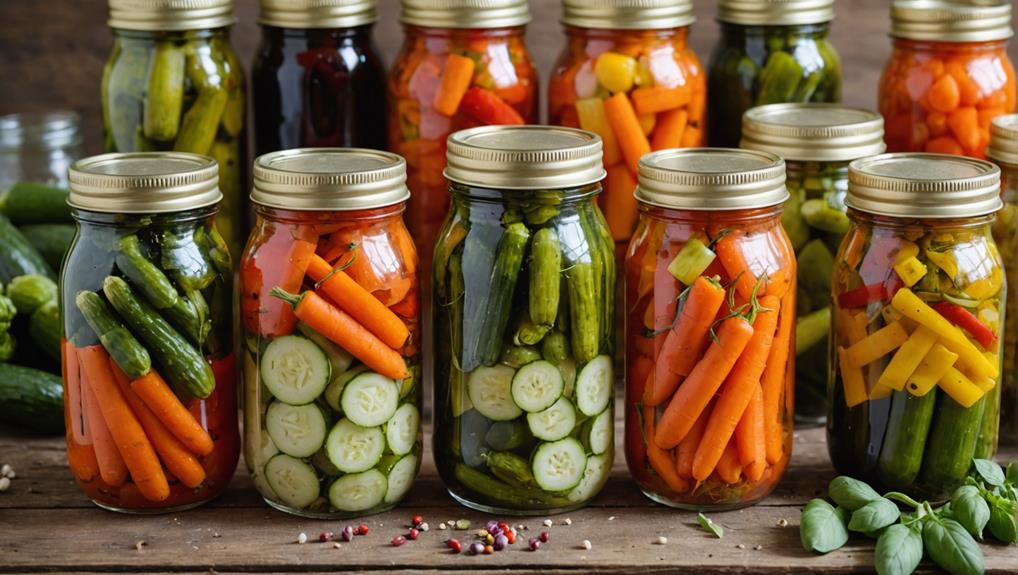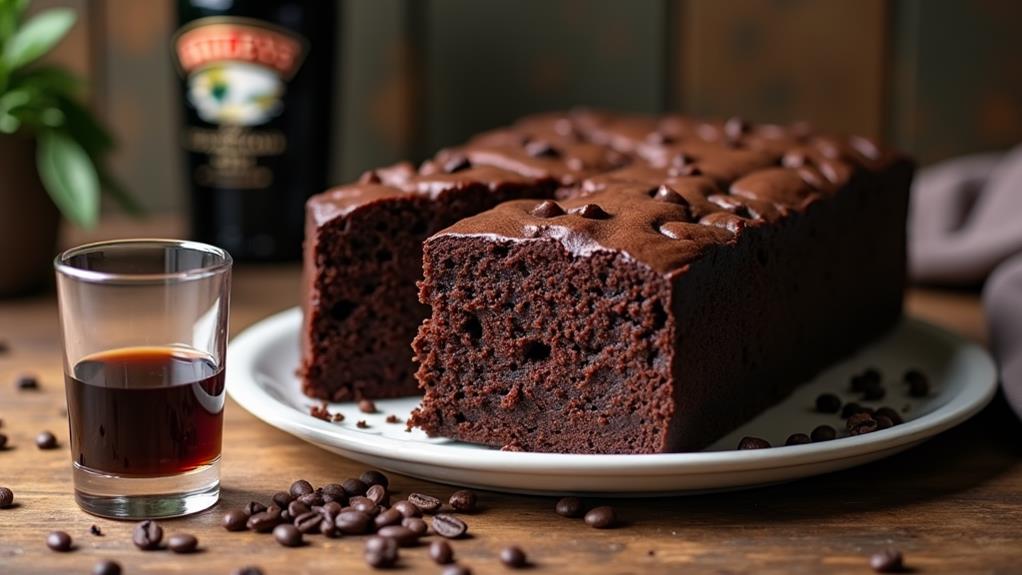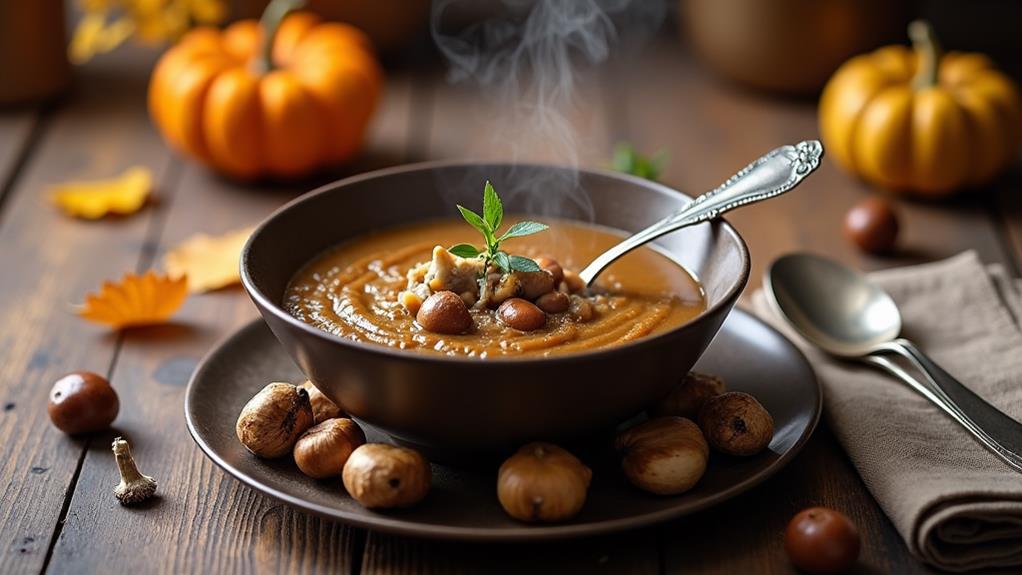To master the art of pickling, start by selecting fresh, firm vegetables and cutting them into uniform sizes. Prepare a balanced brine solution using vinegar, water, and salt, then pack your veggies tightly into sterilized jars. Process the jars in a boiling water bath to ensure proper sealing. Experiment with different spices and herbs to create unique flavor profiles, and allow your pickles to ferment in a cool environment for optimal taste development. Store your preserved bounty in a cool, dark place for up to a year, and refrigerate after opening. With these techniques, you'll transform your garden's harvest into a flavorful, long-lasting feast. Discover the endless possibilities of pickling as you refine your skills.
Mastering the Pickling Process
To master the pickling process, you'll need to follow a series of crucial steps. Begin by selecting fresh, firm vegetables and preparing them with precision. Cut them into uniform sizes to ensure even pickling, slicing cucumbers or transforming carrots into sticks.
Next, craft a brine solution that balances vinegar, water, and salt, with optional flavor enhancers like sugar and spices. This innovative blend will preserve the bounty of your harvest.
Pack your prepared vegetables tightly into sterilized jars, leaving about 1/2 inch of headspace for expansion. Add any desired herbs or spices before pouring the brine over the top.
Now, it's time for the critical step: processing the jars in a boiling water bath. Achieve a rolling boil before starting your timer, and process for at least 5 minutes to ensure proper sealing and food safety.
After processing, allow the jars to cool undisturbed until sealed. Check for proper sealing by ensuring the lids don't flex when pressed.
Store your sealed jars in a cool, dark place, where they'll keep for up to a year, ready to deliver a burst of flavor whenever you need it.
Preparing Your Veggie Harvest
With your pickling process knowledge in hand, it's time to focus on preparing your veggie harvest. The key to Preserving the Bounty lies in selecting fresh, firm vegetables free from blemishes and rot. This ensures optimal quality and flavor in your final product.
Once you've chosen your produce, wash it thoroughly and cut it into uniform sizes. This step is crucial for even pickling and proper brining, setting the stage for perfectly prepped vegetables.
Next, create your brine solution using vinegar, water, and salt. You can adjust the ratios to suit your taste preferences and desired preservation strength.
As you're preparing your ingredients, don't forget to sterilize your jars and lids. Boil them for at least 10 minutes to prevent contamination and ensure safe preservation.
When you're ready to pack your hot jars, do so tightly with your prepared vegetables. Leave about 1/2 inch of headspace to allow for expansion during the pickling process. This attention to detail will result in perfectly preserved veggies that maintain their crisp texture and vibrant flavors.
Crafting the Perfect Brine
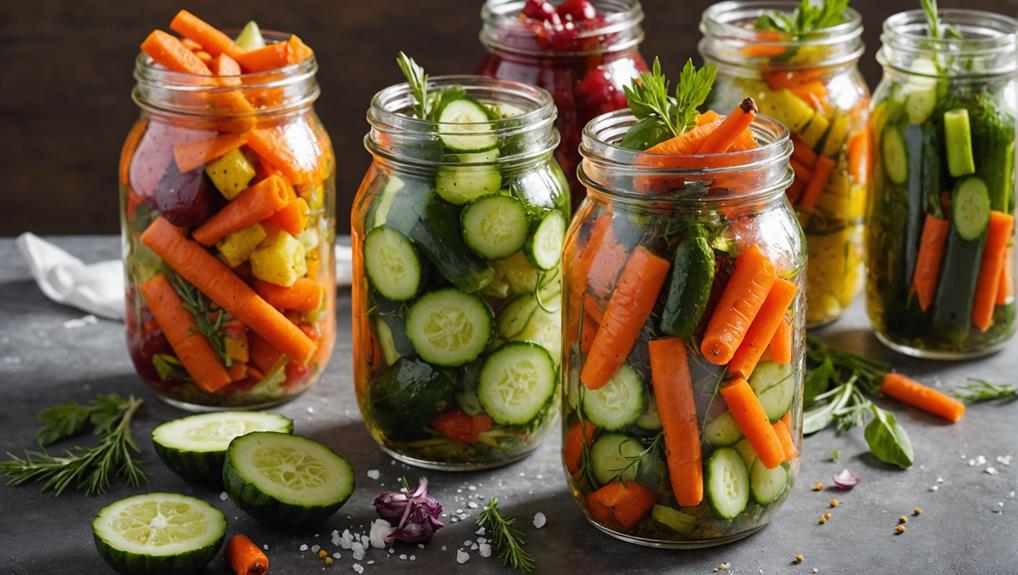
Crafting the perfect brine is a critical step in achieving pickling perfection. As you transform your farmers market bounty into a preserved delight, the brine becomes the flavor-packed liquid that'll elevate your pickles to new heights.
To create a brine that'll make your taste buds dance, follow these innovative guidelines:
- Combine vinegar (5-7% acidity) and water in a 1:1 ratio
- Add kosher or pickling salt for flavor enhancement and preservation
- Infuse spices like mustard seeds and dill for complexity
- Bring the mixture to a boil, then cool slightly before use
- Allow pickles to rest in brine for at least 24 hours before tasting
Start by heating your vinegar-water mixture, dissolving salt and optional sugar completely. For an extra flavor punch, toss in peppercorns, garlic, or other aromatic spices during this process.
Once your brine has cooled slightly, pour it over your packed vegetables, ensuring even distribution. Remember, patience is key – the longer your pickles sit, the more flavorful they'll become.
Fermentation and Flavor Development
Once you've crafted the perfect brine, it's time to let nature work its magic through fermentation. This transformative process occurs when lactic acid bacteria convert sugars in your vegetables into lactic acid, creating a tangy, complex flavor profile that evolves over time.
To optimize this flavor development, maintain a cool, consistent environment between 60-75°F, which promotes ideal bacterial growth.
As you embark on your pickling journey, remember that patience is key. The duration of fermentation significantly impacts the final taste of your pickles. For a fresher flavor, opt for shorter fermentation periods. If you're after a more pronounced tang and depth, allow your pickles to ferment longer.
To enhance the aromatic profile of your pickles, consider adding spices and herbs during the fermentation process. Place a baking sheet under your fermentation vessels to catch any overflow and keep your workspace tidy.
Preserving and Savoring Success
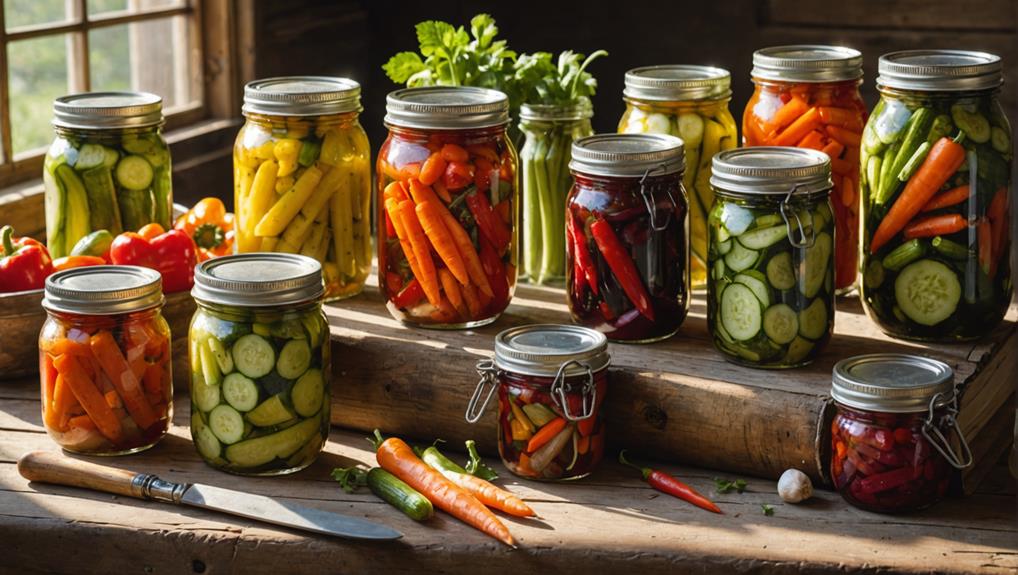
The preservation process marks the final step in your pickling journey. You've carefully prepared your vegetables and crafted the perfect brine, but now it's time to ensure your pickled creations stand the test of time.
Proper storage conditions are crucial for maintaining the quality and safety of your pickled vegetables. Store your jars in a cool, dark place to maximize their shelf life, which can extend up to a year if unopened. Once you've cracked open a jar, refrigeration is key to preserving freshness.
To elevate your pickling game and savor your success, consider these innovative tips:
- Experiment with unique herb and spice combinations in your brine
- Try fermenting your pickles for enhanced flavor and probiotic benefits
- Use different vinegars to create diverse flavor profiles
- Add sweeteners like honey or maple syrup for a twist on traditional pickles
- Combine multiple vegetables in one jar for exciting texture and taste variations
Remember to regularly check your pickled vegetables for signs of spoilage, such as off odors or discoloration.
Frequently Asked Questions
Can I Pickle Fruits Alongside Vegetables?
Absolutely! You'll find exciting fruit pairings create unique sweet pickles. Experiment with combining fruits and veggies in your fermentation methods. Try apple-cucumber or mango-carrot combos for innovative flavors that'll revolutionize your pickling game. Don't be afraid to mix it up!
How Long Can Homemade Pickles Last in the Refrigerator?
Time flies when you're savoring pickles! Your homemade creations can last 2-3 months in refrigerator storage. Pickle flavors intensify over time, enhancing their shelf life. Experiment with unique blends to revolutionize your pickling game and maximize longevity.
Are There Alternatives to Vinegar for Pickling?
You've got options beyond vinegar! Try salt brine pickling for a traditional twist, or explore fermentation methods for probiotic-rich pickles. For a zesty alternative, experiment with citrus juice pickling. These innovative techniques will revolutionize your preserving game.
Can I Reuse Pickling Brine for Multiple Batches?
You can reuse pickling brine, but be mindful of brine flavor changes. Store it properly and consider brine dilution for optimal results. Experiment with adding fresh spices or vinegar to revitalize the brine for your next innovative batch.
What Safety Precautions Should I Take to Prevent Botulism in Pickles?
Shockingly, 20% of home-canned foods can harbor botulism! To stay safe, you'll want to master proper pickling techniques, ensure fermentation safety, and prioritize jar sterilization. Embrace innovative methods to create delicious, botulism-free pickles that'll impress your foodie friends.
Final Thoughts
You've now mastered the art of pickling, transforming your garden's bounty into jars of flavorful, preserved delights. You've prepared your harvest with care, crafted the perfect brine, and nurtured the fermentation process. As you savor your pickled creations, you'll taste the fruits of your labor and the essence of seasons past. Your newfound skills will ensure that you'll never let a vegetable go to waste, preserving nature's goodness for months to come.

